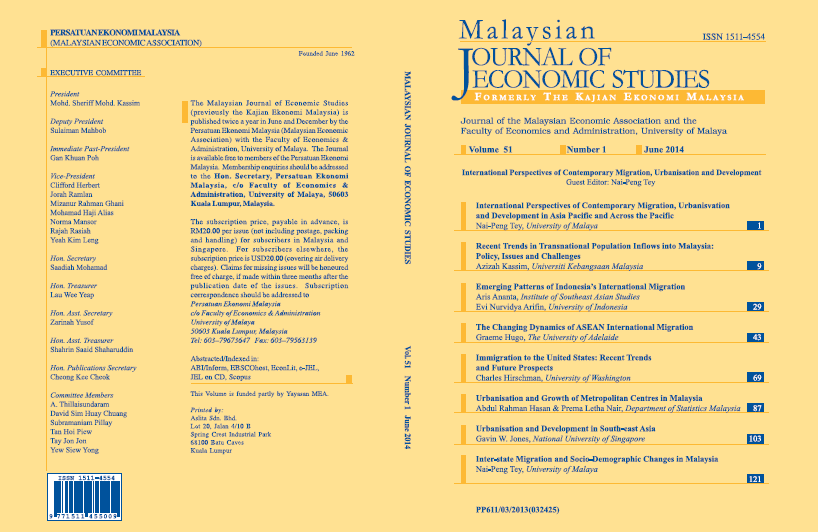Recent Trends in Transnational Population Inflows into Malaysia: Policy, Issues and Challenges
Keywords:
Asylum seekers and refugees, expatriates, foreign workers, international students, irregular migrantsAbstract
Malaysia’s foreign population increased rapidly in the last three decades. In 1980, of a population of over 13 million, 0.49 per cent were noncitizens. In 2010, the number of non-citizens increased to 2.3 million, making up 8.3 per cent of a total population of 28.4 million. The majority is low skill workers, both legal and irregular. There are also other groups comprising expatriates, international students, participants of the ‘Malaysia My Second Home’ programme, and asylum seekers/refugees whose numbers are relatively small. The inflows which contribute significantly to economic development have their attendant problems. This paper takes a comprehensive view of all the major inflows, taking a cue from state policy towards them. The inflows are divided into two categories: welcome and problematic inflows. It then outlines how each inflow emerged and expanded, state responses towards them and discusses related issues and challenges. All categories of migrants have both positive and negative impacts, but the low skill workers (including asylum seekers and refugees) are the most challenging especially in relation to the economy, border security, and internal order. The paper concludes with a discussion on the urgent need to review the foreign worker policy including Malaysia’s stand on asylum seekers/refugees to address the problems related to migrants.

